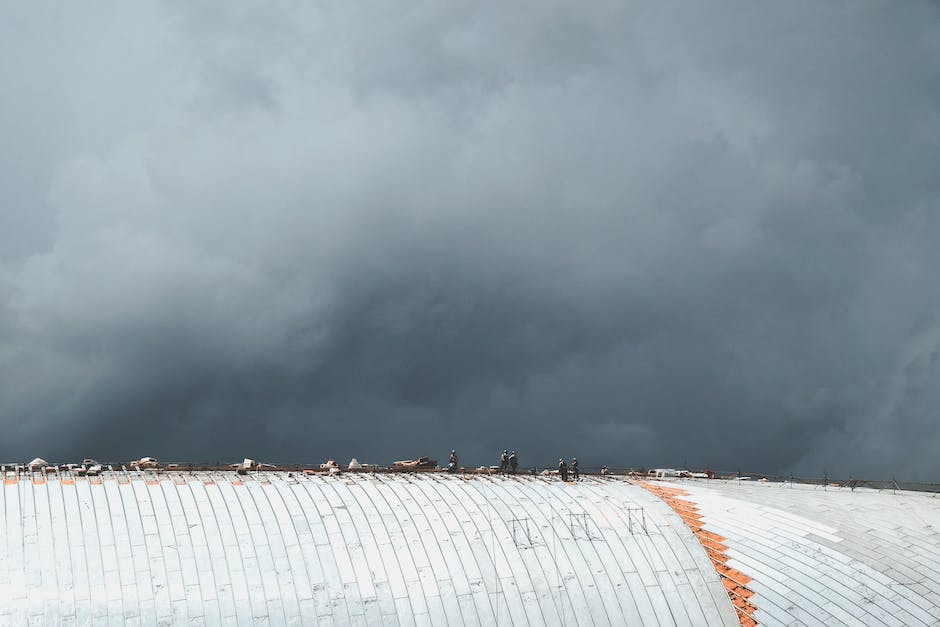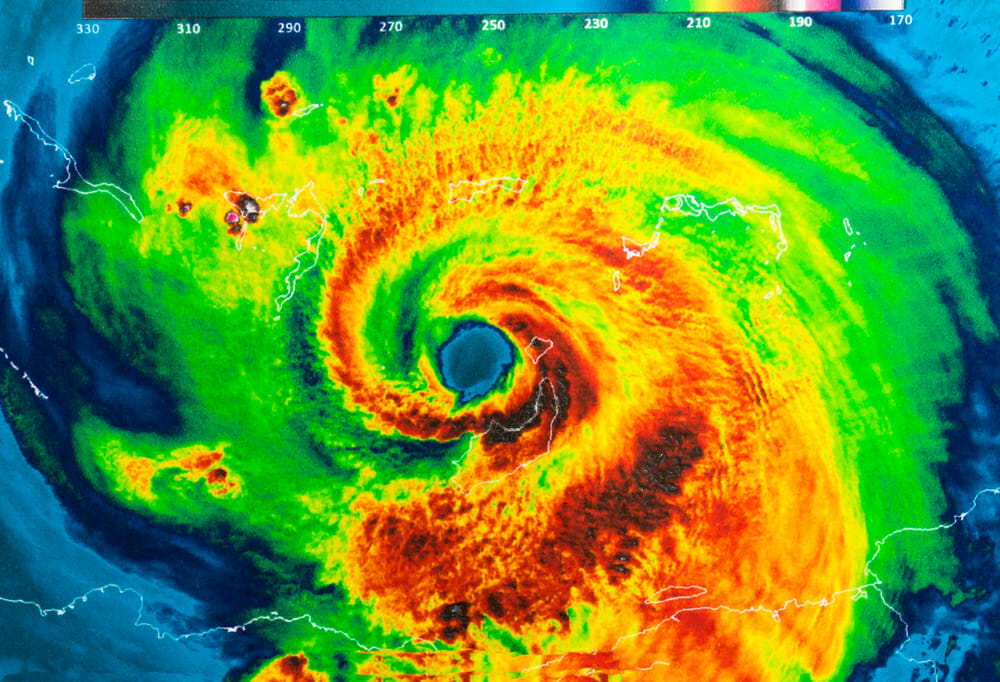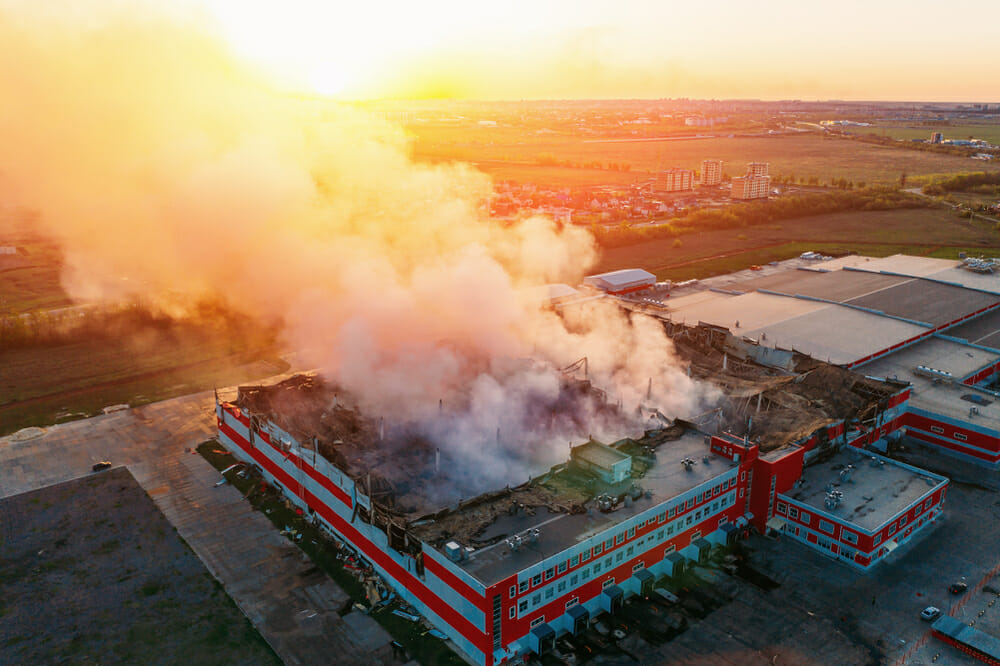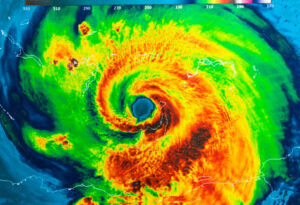Has a recent storm wreaked havoc on your roof, leaving you bewildered and wondering how to navigate the complex insurance claim process? We understand that dealing with a roof storm damage insurance claim can be overwhelming, adding more stress to an already distressing situation. At Insurance Claim Recovery Support, we aim to ease this heavy burden, helping you understand and navigate the nuances of your insurance coverage, document your damage and advocate for your rights as a policyholder.
In the wake of significant storm events, one of the most common challenges homeowners like you face is understanding the details of an insurance policy and what it covers. The process can seem like an endless loop, where missteps could lead to denied claims, potentially leaving you with substantial out-of-pocket costs. Providing you with the information necessary to make informed decisions is the first line of defense against such challenges.
To provide you a quick understanding of a roof storm damage insurance claim, here’s a brief overview:
- First step: Get in touch with your insurance company as soon as you notice damage.
- Thorough documentation: Ensure to take high-quality pictures and write detailed notes about the damage caused.
- Professional inspection: Enlist the help of a qualified roof inspector to assess the extent of the damage.
- File your claim: Be aware of the age of your roof, deductible, the cost of repair, and replacement.
- Approval: The insurance adjuster is the only one who can approve your claim.
- Denial Possibility: Be prepared for the possibility that your claim could be denied due to various reasons such a mal installation or inadequate maintenance of your roof.

Evidently, managing a roof storm damage insurance claim is not a walk in the park, but equipped with the right knowledge and support, you can recover the rightful value of your loss. Read on to comprehend each step in detail and master the process, turning this daunting task into a manageable one to get your property back to tip-top shape.
Understanding Roof Storm Damage
Before we dive into the process of filing a roof storm damage insurance claim, it’s crucial to understand what roof storm damage looks like and what causes it. Storm damage to your roof can result from a variety of weather events, and identify the signs early to mitigate further damage.
Common Types of Roof Storm Damage
Here are some common types of roof damage caused by storms:
Damaged or Missing Shingles: Strong winds can cause your shingles to curl, lift, or even blow off entirely. When this happens, the underlying layers of your roof become exposed to the elements, which can lead to leaks and further damage.
Water Leakage: One of the most apparent signs of roof damage is a leak. Leaks often indicate that your roof has been damaged and water is seeping through.
Damp Rafters: If you notice moisture build-up or warping in your attic’s rafters, this could be a sign of roof damage.
Flashing Damage: The flashing around your home, especially the chimney, are stress points often damaged by high winds.
Gutter Damage: High winds can also cause gutters to become clogged, loosen, dent, or even be entirely blown away.
How to Identify Roof Storm Damage
Identifying roof storm damage involves examining your home for signs of damage such as missing shingles, leaks, damp rafters, and damaged flashing. Look for dark spots or dents on your asphalt shingles, indicating the granules have been knocked off. On metal roofs, hail impacts can be more apparent, so watch out for dents or pockmarks.
Roof inspections can be hazardous and ideally should be performed by professionals. We at Insurance Claim Recovery Support recommend having your roof inspected prior to storm season to prevent exacerbating existing damages.
The Impact of Different Weather Events on Roofs
Different weather events can cause distinct types of damage to your roof. For instance, straight-line winds from thunderstorms can lift or tear off shingles, while heavy hail can cause dents or punctures. Tornadoes and hurricanes, with their high-intensity wind speeds, can cause extensive structural damage.
Fallen trees, flying debris, and even dirt and leaves carried by the wind can cause additional damage to your roof. And let’s not forget the potential damage caused by heavy snow and ice buildup.
Knowing the types of roof storm damage that can occur and how to identify them is the first step in filing a successful insurance claim. In the next sections, we’ll delve into the specifics of homeowners’ insurance coverage and the process of filing a roof storm damage insurance claim.
The Role of Homeowners Insurance in Roof Storm Damage
One of the critical components in navigating a roof storm damage insurance claim is understanding how homeowners insurance plays a part. Not all types of damage are covered, and certain policies may have specific deductibles. Let’s break it down.
What Homeowners Insurance Typically Covers
Homeowners insurance typically covers roof damage caused by extreme weather events like heavy thunderstorms, hail storms, and tornadoes. This includes damage from straight-line winds or fallen trees during storms. If these weather events cause your roof damage, your insurance should cover most or even all of the cost for roof replacement.
However, the extent of the coverage often depends on the findings of the adjuster’s inspection. If the adjuster confirms that extreme weather caused your roof damage, your homeowners insurance should cover the replacement costs.
Special Deductibles for Wind and Hail Damage
It’s essential to note that some states allow home insurance companies to implement a special deductible for wind and hail damage, especially related to hurricanes. In such cases, if your roof suffers damage in a hurricane, you may find you have a higher deductible for the roof claim. Your regular home insurance deductible still applies to other types of damage, such as fire.
Understanding the Difference Between Actual Cash Value (ACV) and Replacement Cost Value (RCV)
When it comes to insurance payouts, your specific policy determines the amount you receive. Your policy is either an Actual Cash Value (ACV) policy or a Replacement Cost Value (RCV) policy.
An ACV policy provides a payout that reflects the current, depreciated value of your roof. So, the insurance company only pays what your roof is worth today.
In contrast, an RCV policy covers what it costs to replace your entire roof or at least most of it. With RCV, you first receive a check for the actual cost value of your roof. After your roof replacement, once you provide proof that the work was done according to the claim, you receive a second check for the rest.
The Impact of Roof Age and Condition on Insurance Coverage
It’s also crucial to be aware that the age and condition of your roof can significantly affect your insurance coverage. Older roofs or roofs in poor condition may not be fully covered. Some insurance companies may only cover the depreciated value of the roof, not the full replacement cost.
Moreover, if your roof has been neglected or poorly maintained, your insurance company may deny coverage for damage caused by a storm. That’s why we at Insurance Claim Recovery Support always stress the importance of regular maintenance and prompt repairs to ensure your roof is in good shape and adequately covered.
Understanding these details is crucial when dealing with homeowners insurance in roof storm damage scenarios. It empowers you to make informed decisions and ensures you receive the maximum benefit from your policy during the insurance claim process.
How to File a Roof Storm Damage Insurance Claim
Filing a roof storm damage insurance claim might seem daunting, but it doesn’t have to be. By following a simple process and understanding key steps, you can navigate the claim process effectively and efficiently. Here are the key steps you need to take:
Steps to Take Immediately After a Storm
- Ensure Safety First: Before assessing the damage, ensure that it is safe to do so. Do not climb on a wet or damaged roof as it may lead to injuries.
- Assess the Damage: Inspect your property for visible signs of damage. This could include broken or missing shingles, dents in the gutters, or interior leaks.
- Prevent Further Damage: Most home insurance policies require you to take steps to prevent further damage. This could mean covering damaged areas with tarps or boarding up broken windows.
Documenting the Damage for Your Claim
Thorough documentation is critical when filing a roof storm damage insurance claim. Here’s how you can go about it:
1. Take Photos and Videos: Document the extent of the damage with clear photos and videos. This includes both close-up shots of the damage and wider shots to show the context.
2. Keep Damage-Related Receipts: If you’ve had to make any emergency repairs, keep all the invoices, billing statements, and receipts. They serve as proof of the cost you’ve incurred due to the damage.
Working with an Insurance Adjuster
Once you’ve reported the damage to your insurance company, they’ll send an insurance adjuster to assess the damage. The adjuster’s role is to verify the damage, determine the cause, and estimate the cost of repair or replacement. Here are a few tips for working with an adjuster:
1. Be Present During the Assessment: Try to be present during the adjuster’s visit. This allows you to point out all the damage and provide any additional information that could be helpful.
2. Provide Your Documentation: Share your documentation with the adjuster. Your photos, videos, and receipts can support your claim and help ensure a fair assessment.
The Role of a Public Insurance Adjuster in the Claim Process
While insurance adjusters represent the insurance company, a public adjuster works for you. If you feel your claim settlement is undervalued, consider hiring a public adjuster. They can conduct their own assessment, help you understand your policy, and negotiate with the insurance company on your behalf.
At Insurance Claim Recovery Support, we understand the complexities of the claim process. We can help you navigate this challenging time and ensure you receive a fair and prompt settlement. Our team of experienced public adjusters will work with you every step of the way to simplify the process and maximize your claim reimbursement.
Following these steps can help ensure a smooth claim process. Documentation is key, and you don’t have to navigate this process alone. Whether you decide to work with a public adjuster or not, understanding these steps will empower you to handle your roof storm damage insurance claim effectively.
Dealing with Claim Denials and Disputes
Unfortunately, not all insurance claims are approved on the first try. Understanding why claims get denied and how to dispute a denial can be crucial in securing the funds needed for repairs.
Common Reasons for Claim Denials
Insurance companies may deny your roof storm damage insurance claim for various reasons. The most common include:
-
No visible signs of roof damage: Insurance adjusters need to see tangible proof of damage. If they cannot identify clear signs of storm damage, they may deny the claim.
-
Delay in filing the claim: Insurance companies typically require claims to be filed promptly after the damage occurs. If you wait too long, your claim may be denied.
-
Improper roof installation: If your roof was not installed correctly, your insurance company might argue that the damage was due to the faulty installation rather than the storm.
Knowing these common reasons for claim denials can help you preemptively address potential issues and increase your chances of a successful claim.
How to Dispute a Denied Claim
If your claim is denied, don’t panic. You have the right to dispute the decision. Here are the steps to take:
-
Understand the Reason for Denial: Your insurance company is required to provide a detailed explanation for the denial. Make sure you fully comprehend the reason before proceeding.
-
Gather Evidence: Collect photos, videos, and other documentation to support your case. You may also want to get a second opinion from a licensed roofer or public adjuster.
-
Write a Letter: Submit a formal letter disputing the denial. Include your evidence and clearly explain why you believe the denial was incorrect.
-
Consider Hiring a Professional: If the dispute process becomes too complex or stressful, consider hiring a public adjuster or attorney to advocate on your behalf.
At Insurance Claim Recovery Support, we’re here to assist you throughout the entire claim process, including disputes.
When to Consider Legal Action
If you believe your claim has been unjustly denied or underpaid, it might be time to seek legal counsel. An attorney specializing in insurance claims can provide guidance and advocate on your behalf. At Insurance Claim Recovery Support, we aim to prevent unnecessary litigation by ensuring your claim is professionally managed from the start. However, should the need arise, we’re here to assist you in finding the right legal support.
In many states, insurance companies are prohibited from increasing premiums due to claims for ‘Act of God’ events like storms, which can take some pressure off your decision to pursue legal action if necessary.
Filing a roof storm damage insurance claim can be complicated, but you don’t have to navigate it alone. With guidance and support, you can successfully manage your claim and ensure your property is restored to its pre-loss condition.
Preventing Future Roof Storm Damage
While we’re always here to help you navigate through your roof storm damage insurance claim, take proactive steps to prevent future damage. This can save you the stress of dealing with insurance claims and ensure the longevity of your property.
Choosing the Right Roofing Material for Storm Resistance
The type of roofing material can significantly affect your roof’s ability to withstand storm damage. While there is a wide range of roofing materials available, some are more resistant to wind and hail damage than others.
For example, metal roofing is known for its durability and resistance to high winds, making it a great choice if you live in a storm-prone area. On the other hand, asphalt shingles, while cost-effective, may not stand up well to severe storm conditions.
When deciding on roofing material, it’s critical to consult with a professional roofing contractor. They can provide expert advice based on local weather conditions and your home’s specific needs.
Regular Maintenance and Inspections to Prevent Damage
Keeping your roof in good condition is an essential part of preventing storm damage. This involves regular maintenance and inspections.
Scheduled annual roof inspections by a professional can detect potential issues early, preventing minor problems from becoming major ones. These inspections can identify loose or missing shingles, signs of water damage, and other early warning signs.
Additionally, keeping gutters clean and ensuring your roof is properly ventilated can go a long way in maintaining your roof’s health. Also, remember to trim trees and remove any debris that could potentially damage your roof during a storm.
Additional Coverage Options for High-Risk Areas
If your property is located in an area prone to severe weather conditions, you may want to consider additional coverage options. Some insurance companies offer separate wind and hail deductibles or additional coverage options for high-risk areas.
Understanding your policy deductible and what’s covered under your insurance policy can help you prepare for unexpected events.
It’s also worth noting that even with the best preventive measures, roof damage can still occur. In such cases, working with a trusted advisor like us at Insurance Claim Recovery Support can ensure that your roof storm damage insurance claim is handled efficiently, allowing you to get back to your normal life as quickly as possible.
Conclusion
Undoubtedly, navigating the complexities of a roof storm damage insurance claim can feel overwhelming. But armed with the right knowledge and resources, it becomes a manageable task. From understanding your insurance coverage to documenting damage, filing a claim, and dealing with potential disputes, each step is crucial in ensuring a fair and timely settlement.
The most important factor in this process is knowledge. Understanding your policy, knowing how to document damage, and having a clear grasp of the claim process not only empowers you but also ensures a smoother claim journey.
You’re not alone in this. At Insurance Claim Recovery Support, we’re committed to making the claim process as smooth and stress-free as possible. We understand the complexities of filing a roof hail insurance claim, and we’re here to help you navigate the process.
Additionally, preventative measures and regular maintenance can save you from future headaches. Ensuring your roof is in good condition and can withstand weather events is not just good practice, but also a requirement by many insurance companies.
In the end, insurance is there to protect you. Your policy is a contract, and insurance companies are obligated to uphold their part. Being prepared, informed, and proactive can significantly help you through the process.
If you ever find yourself facing a roof storm damage insurance claim, don’t hesitate to reach out to us. We’re here to ensure you receive the fair and prompt settlement you deserve. After all, your peace of mind is our priority.
For more tips on dealing with different types of property damage claims, check out our pages on hail damage, tornado damage, and flood claims.
Texas-Specific Information for Roof Storm Damage Insurance Claims
Navigating a roof storm damage insurance claim can be a daunting task, especially in the Lone Star State where storms are an all-too-common occurrence. As public insurance adjusters specializing in Texas, we understand the unique challenges and are here to make your insurance experience worry-free.
Understanding Texas Homeowners Insurance Policies
Texas homeowners insurance policies typically cover damage caused by storms, including wind and hail. However, the specific coverage can vary greatly depending on your policy’s terms and conditions. It’s worth noting that while most policies cover wind damage, some insurers in coastal regions may exclude damage caused by wind during a hurricane. In such cases, you may need to get an additional windstorm insurance policy.
How Texas Weather Conditions Impact Roof Storm Damage Claims
In Texas, roof storm damage can be caused by various weather events, from hailstorms in Dallas to hurricanes in Houston. These events can lead to a wide range of roof damage, including broken or missing shingles, leaky roofs, and even structural damage in severe cases. The type and extent of the damage can significantly impact your insurance claim.
For instance, a standard homeowners insurance policy may cover water damage from a leaky roof if it was caused by a fallen tree branch during a storm. However, if the leaky roof was due to neglected maintenance, the damage might not be covered.
Navigating the Texas Insurance Claim Process
The process of filing a roof storm damage insurance claim in Texas involves several steps. It starts with immediate action right after the storm, such as taking measures to protect your property from further damage, which is often a requirement in homeowners insurance policies.
The next step is documenting the damage, which includes taking photos and keeping a log of your correspondence with the insurance company. This step can be crucial in case there are disputes later on.
When it comes to dealing with the insurance company, they might not always have your best interests in mind. They are businesses, and their goal is to minimize payouts. If you’re not doing a good job of explaining what they should be paying you, they have no obligation to do so. That’s where we, at Insurance Claim Recovery Support, come in. We serve as your advocate to insurance companies, ensuring you get what you rightfully deserve.
Local Resources for Texas Homeowners Dealing with Roof Storm Damage
In addition to our services, there are other local resources available to Texas homeowners dealing with roof storm damage. These include local roofing contractors who can provide repair services, and community organizations offering support to affected homeowners.
Case Studies of Roof Storm Damage Insurance Claims in Texas Cities
Our experience helping Texas property owners navigate roof storm damage insurance claims has given us a unique insight into how these claims are handled across different cities. From Austin to Houston, and from Dallas to San Antonio, we’ve seen a wide range of claims and dealt with various challenges.
For example, in Dallas, we helped a homeowner recover a fair settlement after their roof was severely damaged by a hailstorm. In Houston, we assisted a property owner who was initially denied coverage for hurricane-related roof damage.
In each case, we worked diligently to ensure our clients received the full benefit of their insurance policy. We’re proud to stand with Texas property owners in their journey to recovery, providing exceptional service and uncompromising support.
So, if you’re dealing with a roof storm damage insurance claim in Texas, you don’t have to face this challenge alone. We’re only a call or click away.







